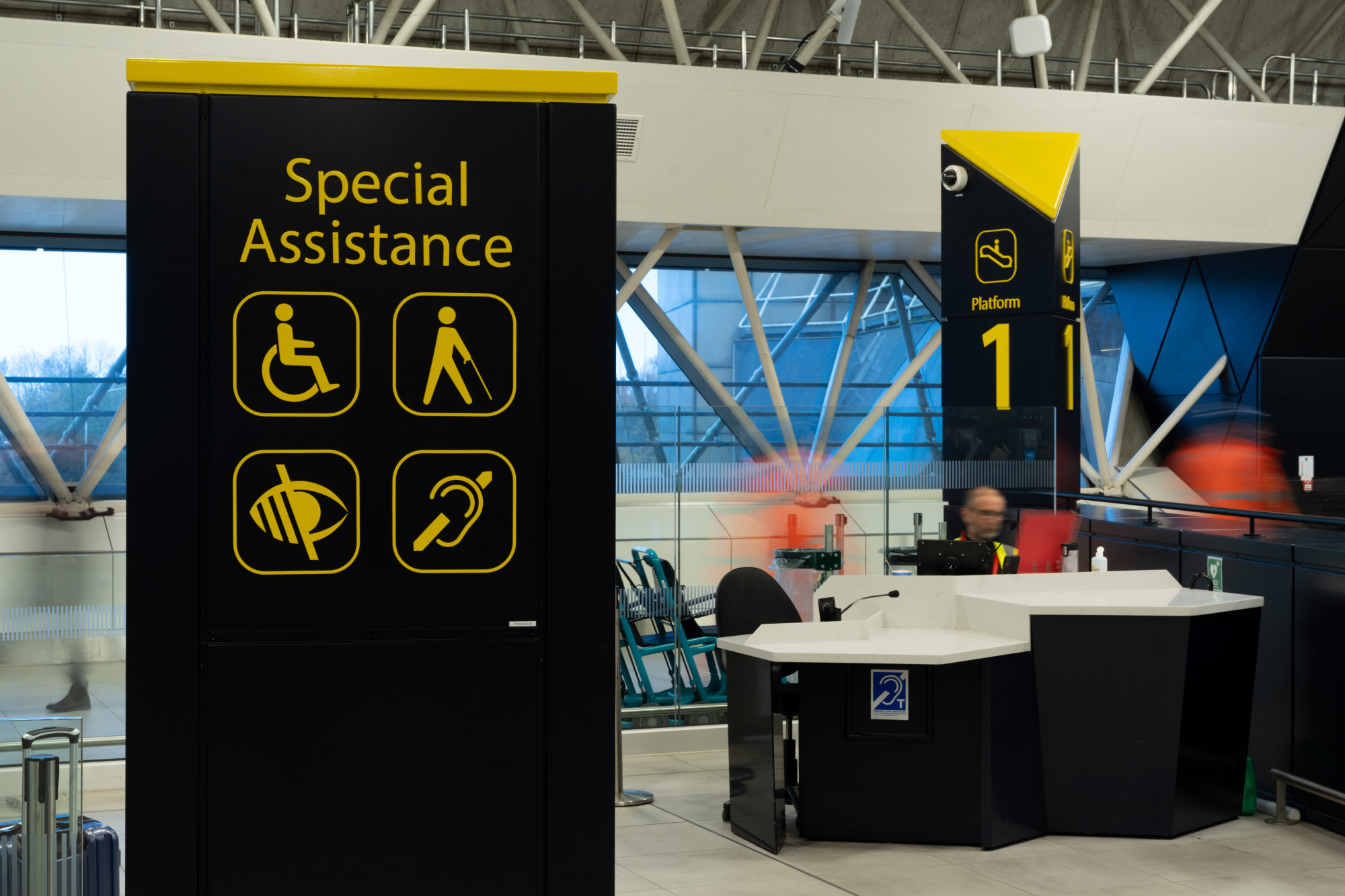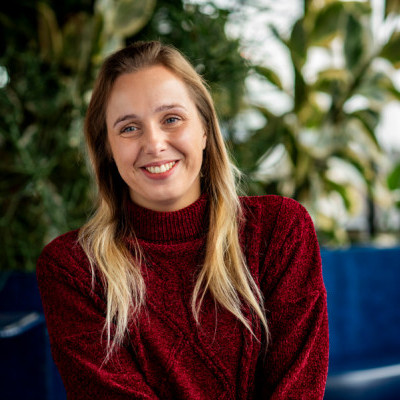The 7-Point plan for navigating the path to inclusive wayfinding design
In the realm of placemaking, the integration of wayfinding systems is not just about guiding people from A to B in the quickest way possible, it's about ensuring that everyone can navigate spaces with ease and dignity.
There are at least 16 million disabled people in the UK which equates to almost 1 in 4 people. It is likely that at some point in our lives, we will all have accessibility requirements in one way or another. When people think about disability, visible impairments often spring to mind for example a wheelchair user, in fact only 1 in 3 disabled people have a visible impairment.

By taking an inclusive design approach to wayfinding design we can help create environments that everyone can use and which celebrate people's diversity and differences.
Mima has been at the forefront of integrating Access & Inclusion (A&I) into their projects since they started over 40 years ago, Mima is the only human-centered design agency to have a dedicated A&I team who work alongside designers on all their projects too.
At the forefront of this movement are Rosie Smith, Senior Wayfinding Designer, and Natasha Davies, Senior Access Consultant, whose innovative experience provides invaluable insights into the intersection of wayfinding and inclusive design. Drawing from their expertise, we present a 7-point plan for creating inclusive environments through effective and inclusive wayfinding strategies and design:
1. Understand Diverse User Needs: Rosie emphasises, "Inclusion is not just about compliance and ticking boxes; it's about understanding empathetically the diverse needs of users." Mima always starts by conducting thorough research to identify the specific challenges faced by different user groups, including those with impairments, both non-visible and visible, elderly individuals, parents with strollers, or international tourists who don’t speak the native language. By gaining insights into their experiences and requirements, you can tailor your wayfinding solutions to address their unique needs.”
For the National Maritime Museum, Mima began our research and tried to humanise the problems at hand. We used a variety of ethnographic and qualitative methods to understand visitors and develop a holistic view of their experience within the museum. Behavioural observations helped to identify visitor pain points. Interviews with staff and visitors gave us a deeper understanding of the causes behind frustration or confusion with the building layout, such as; exhibitions or notable pieces they weren’t aware of, they had missed or couldn’t find, entrances, exits, vertical circulation and onward travel. These responses formed the base of our wayfinding strategy that aimed to deal with ensuring the visitor experience was inclusive for all.
2. Prioritise Inclusive Design Principles: Natasha advocates for the integration of inclusive design principles into wayfinding systems as early as possible and throughout the design process. "Designing with inclusivity in mind benefits everyone," she notes. Adopting principles such as clarity, simplicity, flexibility, and intuitive navigation helps to ensure that your wayfinding solutions are accessible to all individuals, including people with a wide range of different access requirements.
3. Promote Multisensory Engagement: Natasha highlights the importance of multisensory engagement in wayfinding design. Incorporating features such as tactile cues, auditory signals, and distinctive textures to provide orientation cues can make signage more inclusive for people with visual impairments. By appealing to multiple senses, you can enhance spatial awareness and facilitate independent navigation. When designing for people who are visually impaired clients are often quick to default to using Braille, however around seven percent of people who are registered blind or partially sighted use Braille today (Source: RNIB). At Gatwick Airport Station, Mima worked closely with the Systra Architects, transport networks and passengers to find that prismatic (or tactile) lettering with Braille underneath was much more useful for users to navigate the station independently combined with the large, high-contrast wayfinding system as well as lighting and other visual cues integrated by the architecture team.
4. Ensure Accessibility in the Built Environment: To maximise accessibility the built environment must be both physically accessible and include an accessible and intuitive wayfinding system. All aspects of the physical environment should be designed from the outset to accommodate a wide range of end users. Accessible features and facilities should be promoted through clear information and signage. Where it is not possible to make a route accessible, alternative routes need to be communicated clearly. One of the best aspects of working directly with architects on new build projects is that Mima can challenge and alter building design at an early stage of the design process meaning buildings can work more intuitively before they’ve even been built from a wayfinding perspective. Although many of Mima’s projects are environments that have already been or are in the process of being built, so we have to work with what we have. One prime example is at the Royal Observatory Greenwich, where its grounds are a Scheduled Ancient Monument in a Grade l listed park at the heart of a UNESCO World Heritage Site. From a strategic perspective, Mima worked closely to ensure step-free routes were easily identified and accessible - the visitor experience wasn’t compromised.
Physical barriers create social barriers. A person is only limited by their environment. By removing these obstacles, you foster a more inclusive and welcoming environment for all.
5. Foster Collaborative Partnerships: Collaboration is key to achieving comprehensive wayfinding and accessibility solutions. Work closely with stakeholders, including architects, planners, disabled user groups, and community members, to co-create inclusive environments. "Inclusivity requires a collective effort," notes Natasha. By fostering partnerships, you can leverage diverse expertise and resources to address complex accessibility challenges effectively.
When working on COP28UAE Mima collaborated with a variety of different stakeholders in the event planning process including architects, transport, sustainability, guest services and wayfinding teams to ensure there was a consistent approach to inclusive design across teams. Throughout the project, Mima also engaged with disabled people's organisations to fully understand the end-to-end user journey by learning from people’s lived experience at similar events.
6. Continuously Evaluate and Iterate: Rosie underscores the importance of continuous evaluation and iteration in inclusive design. "Accessibility is an ongoing journey, not a destination," she emphasises. “Regularly solicit feedback from users, conduct accessibility audits, and monitor the effectiveness of your wayfinding solutions. By continuously refining your approach based on real-world insights, you can ensure that your environment remains inclusive and responsive to evolving needs.”
7. Embrace Technology for Enhanced Accessibility: Technology is the added layer to a physical wayfinding system. Explore technological innovations to augment traditional wayfinding methods. Leveraging smartphone apps, augmented reality, and voice-guided systems can provide real-time assistance to users with visual or mobility impairments. "Technology has the power to revolutionise accessibility and inclusive design," remarks Rosie. By embracing these tools, you can create dynamic and responsive wayfinding experiences for all users.
Working alongside HS2, Mima used cutting-edge Virtual Reality technology to create immersive experiences for user-testing mock station scenarios that aren’t yet real. Over 30 participants participated, 10 of whom had lived experience with a range of disabilities. Mima watched each participant through eye-tracking software as they used VR to navigate the station, this allowed Mima to analyse behaviour and decision-making. At the end of each scenario test the participant was interviewed and Mima asked them to re-play what they did. This testing allowed Mima & HS2 to validate strategic and design decisions through the eyes of the user for Phase 1 of the network.
The seamless integration of accessibility into wayfinding strategy and design is essential for creating truly inclusive environments. By following this 7-point plan, designers and stakeholders can embark on a transformative journey toward a more welcoming world for all. As Natasha aptly puts it, "Inclusive design isn’t just about removing barriers for disabled people, it's good for society as a whole."
Written by:

Natasha Davies
Principal Accessibility and Inclusive Design Consultant
Natasha is an NRAC accredited Access Consultant. She has worked on a broad range of accessibility projects for organisations based in the UK and internationally, helping clients to implement inclusive design solutions. Her previous project experience includes working with historic buildings, art galleries, office spaces, sports centres and mixed-use development schemes.